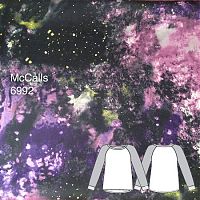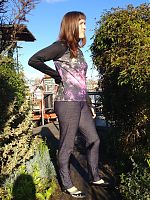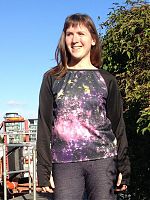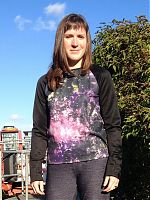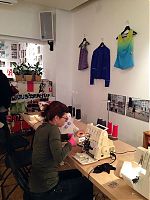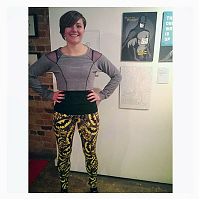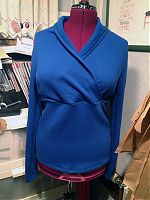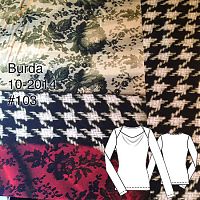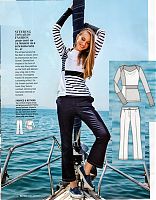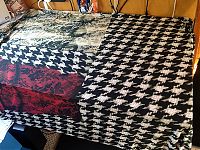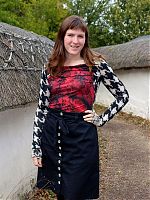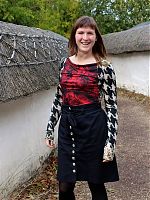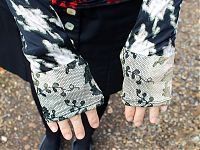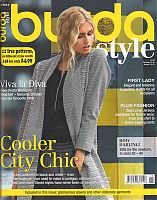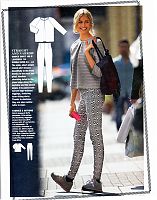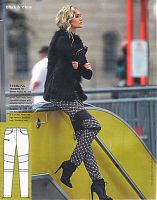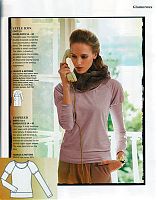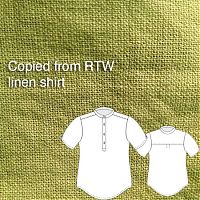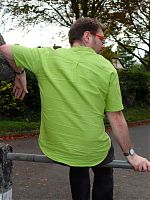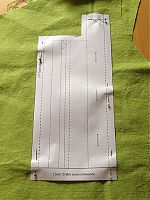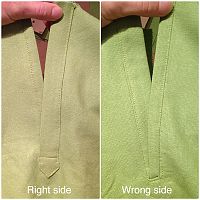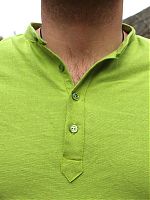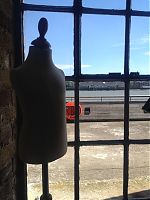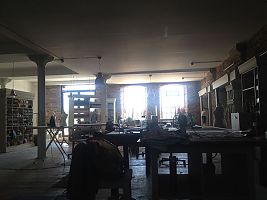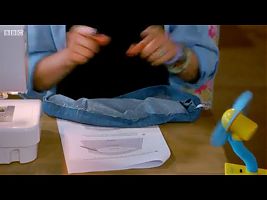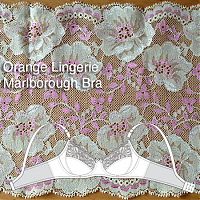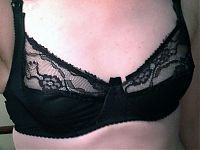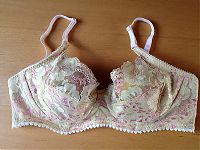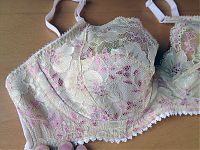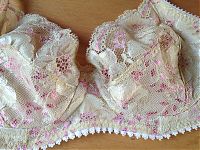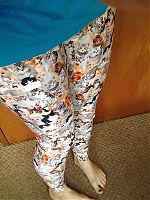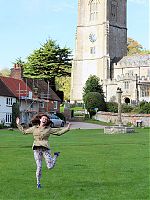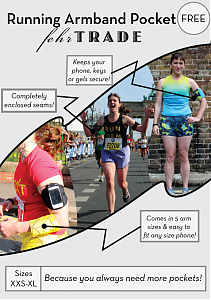I’ve noticed a hole in my wardrobe recently – I really don’t have any plain black skirts that fit me anymore. I found myself wearing my blue travel skirt I sewed up before we went to Mexico last summer an awful lot, and I seemed to get compliments every time I wore it, too.
So when I saw Tia Knight’s very reasonably priced scuba range, I picked up 3m of black to use for both the contrast on my galaxy print sweatshirt, and to make another travel skirt like my blue one.
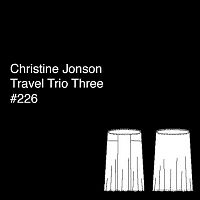
Not the most flattering tech drawing! It’s more A-line than this in real life…
Like the first blue version, this is the skirt pattern from Christine Jonson’s Travel Trio Three pattern, which surely must be one of my best-value wardrobe patterns ever, as I’ve made the top 3-4 times now, and now the skirt twice, too. Like before, the skirt is shortened by 12cm at the “lengthen or shorten here” lines, which creates a really flattering hem length for my figure.
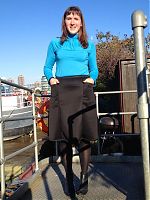
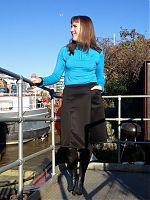

Seen here with the gathered turtleneck view from the same pattern, which I made back in 2011!
I really love how flattering and comfortable this skirt is – it’s made from a knit with an elastic waistband, but it doesn’t look sloppy at all. It’s also got two really deep front pockets built in to the seaming, and I’ve got no worries that my phone will fall out when I’m jumping around the moorings.

